Retro Replay Review
Gameplay
The Dark Convergence delivers a classic parser-driven adventure experience that harks back to the early ’90s. Players navigate the game world using the arrow keys to move their character and enter text commands in a simple parser interface. This blend of directional movement and textual input encourages careful exploration: you’ll need to type commands such as “open door,” “take knife,” or “examine body” to interact with the environment and solve puzzles.
(HEY YOU!! We hope you enjoy! We try not to run ads. So basically, this is a very expensive hobby running this site. Please consider joining us for updates, forums, and more. Network w/ us to make some cash or friends while retro gaming, and you can win some free retro games for posting. Okay, carry on 👍)
Puzzle design in The Dark Convergence leans heavily on environmental clues and inventory combination. For example, you might find a torn piece of cloth that, when examined and stitched together with a needle you discover later, reveals a crucial hint. These puzzles are seldom trial-and-error; instead, they reward patience and close reading of on-screen descriptions. The game’s straightforward but atmospheric logic keeps the tension high as you hunt for keys and tools under a time-sensitive threat.
The game’s reliance on QBasic and its built-in parser means that the learning curve can be steep for players accustomed to modern point-and-click interfaces. Typing imprecise commands can stall progress, so part of the challenge is figuring out the exact verb-noun combinations the engine recognizes. Yet this very constraint amplifies the sense of isolation and vulnerability—qualities essential for a memorable horror adventure.
Graphics
Visually, The Dark Convergence is rendered in QBasic’s native graphics modes, offering chunky pixel art that evokes the charm of early EGA-era titles. Character sprites are small yet expressive, conveying fear with subtle color shifts and simple animations. Environmental backdrops—corridors drenched in shadow, blood-smeared walls, and the occasional surreal dimensional rift—are surprisingly detailed given the technical limitations of the engine.
While modern players might find the resolution and color palette rudimentary, the game’s art style effectively reinforces its unsettling atmosphere. Static scene illustrations—such as the abandoned house’s foyer or the gore-strewn basement—use contrast and negative space to focus your attention on key items or threats. Occasional screen flashes and quick sprite animations heighten jump-scare moments, making each sudden movement feel more jarring.
The audio component, though minimal, complements the visuals with creaking door sound effects and muffled screams. There’s no musical soundtrack, but the sparse use of noise—like a distant scream or falling object—serves as an auditory cue that something horrific is about to happen. Together, graphics and sound create a cohesive, oppressive environment that punches well above its technical weight class.
Story
The Dark Convergence opens with a straightforward premise: a nighttime car crash on a remote road leaves you and your friends stranded. As you venture off in search of help, you stumble upon an abandoned house that holds more than just a telephone—you find bloody bodies, clues to otherworldly intrusions, and an impending doom that originates from dimensions beyond comprehension.
Though the plot is deliberately simple, it unfolds with measured pacing. Early exploration focuses on gathering basic survival items—flashlight, first-aid kit, perhaps a salvaged weapon—while brief text cutscenes reveal your friends’ fates in disturbing detail. As you probe deeper, the narrative layers in cosmic horror elements reminiscent of titles like Dark Seed, blending psychological dread with visceral gore.
The climax hinges on a final confrontation at midnight, where interdimensional horrors converge in a climactic set of puzzles and escape sequences. The tension builds steadily, and several branching text options allow for multiple endings—ranging from narrow escapes to tragic fates—encouraging replayability. Despite its age, the story remains engaging thanks to its effective use of atmosphere and minimalistic exposition.
Overall Experience
Playing The Dark Convergence today is like unearthing a dusty relic from a bygone era of PC gaming. Its QBasic foundation means you can inspect the .bas file directly, offering a rare peek behind the curtain of a finished title. For hobbyist programmers and retro enthusiasts, this transparency is a major draw, turning the game into both an entertainment piece and a learning resource.
However, the trade-off for authenticity is a steeper learning curve and occasional parsing frustrations. Typing the right command at the right moment can mean the difference between survival and instant death, which may alienate casual players. Yet for those willing to embrace the challenge, each solved puzzle and barely avoided threat delivers genuine satisfaction and nostalgia.
In sum, The Dark Convergence stands out as a unique, morbidly atmospheric adventure that showcases the creative potential of QBasic. Its pixelated gore, text-driven interaction, and cosmic horror themes combine into a cohesive package that remains engaging more than thirty years after its release. If you’re seeking a rare slice of early ’90s horror gaming—and don’t mind digging through old-school parser commands—this game is well worth the hunt.
 Retro Replay Retro Replay gaming reviews, news, emulation, geek stuff and more!
Retro Replay Retro Replay gaming reviews, news, emulation, geek stuff and more!
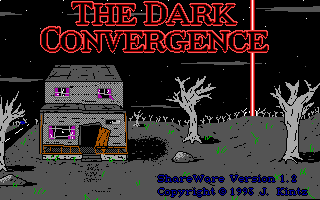
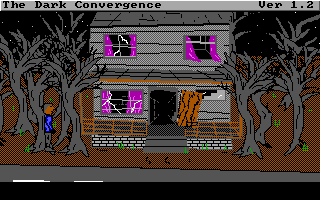
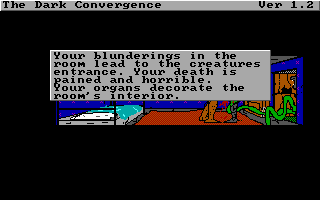
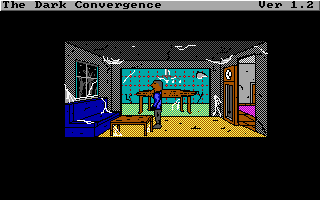
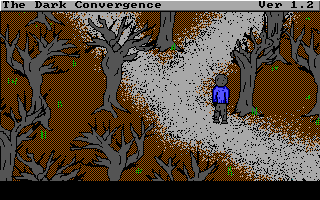
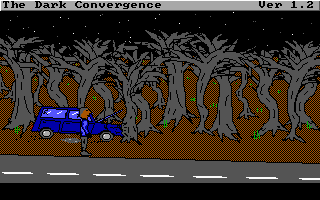



Reviews
There are no reviews yet.